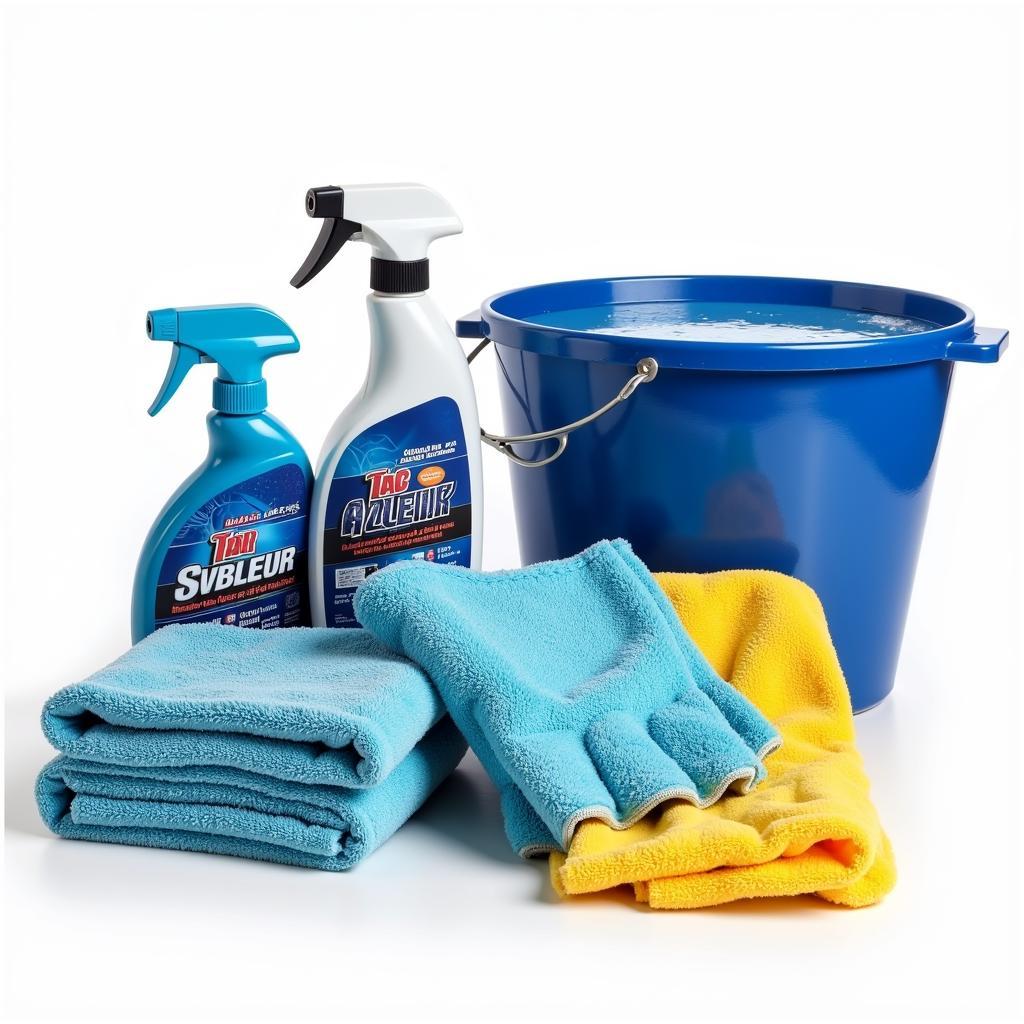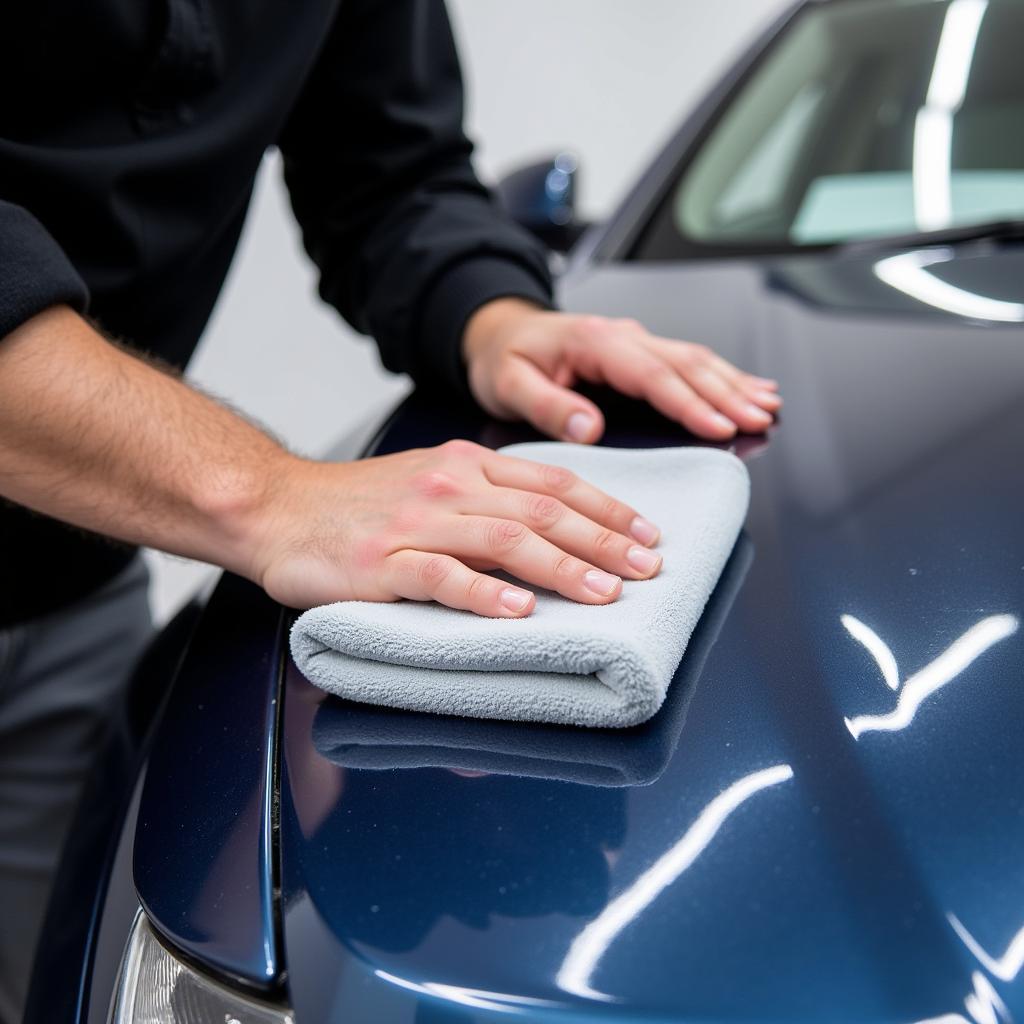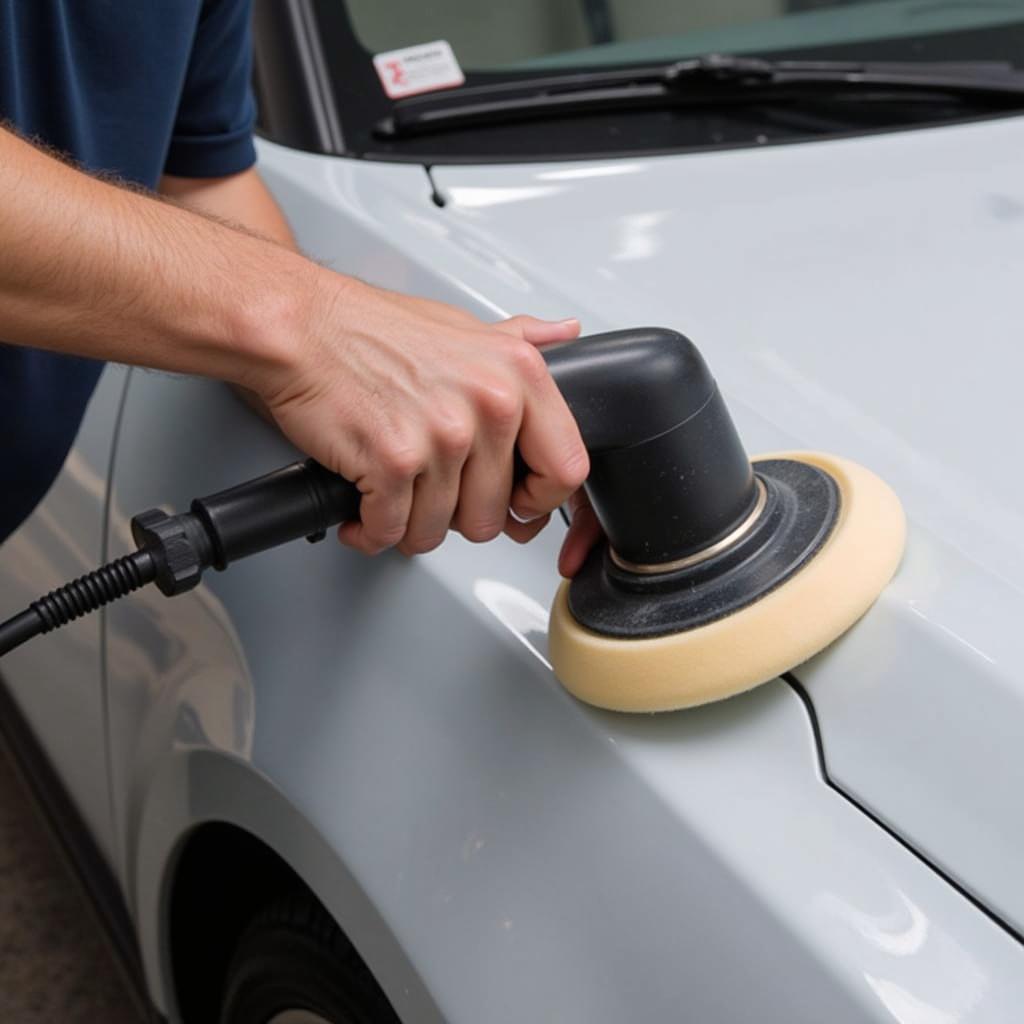Want to learn how to detail the exterior of your car and make it look showroom-ready? You’ve come to the right place. Detailing your car not only enhances its appearance but also helps preserve its value and protect the paintwork from the elements. Whether you’re preparing for a car show or just taking pride in your ride, this comprehensive guide will equip you with the knowledge and steps to achieve professional-level results.
Washing: The Foundation of Exterior Car Detailing
Before diving into the intricacies of polishing and protecting your car’s paint, a thorough wash is paramount. This crucial step removes loose dirt, grime, and contaminants that can cause scratches during the polishing stage.
Here’s what you’ll need:
- Two buckets (one for wash, one for rinsing)
- Car wash soap (avoid dish soap, which can strip wax)
- Wash mitt or sponge
- Wheel and tire cleaner
- Soft-bristled brush
- Microfiber drying towels
Step-by-step guide:
- Pre-rinse: Start by rinsing your car with a strong jet of water to dislodge loose dirt and debris.
- Wheels and tires: Clean your wheels and tires using a dedicated cleaner and appropriate brushes.
- Wash from top to bottom: Using the two-bucket method (one with soapy water, the other with clean water for rinsing), wash your car in sections, starting from the roof and working your way down.
- Rinse thoroughly: Once a section is washed, rinse it thoroughly to remove all soap residue.
- Dry meticulously: Use microfiber drying towels to dry the car completely, preventing water spots from forming.
 Car Wash Supplies
Car Wash Supplies
Decontamination: The Secret to a Flawless Finish
Even after washing, microscopic contaminants like iron particles, tree sap, and industrial fallout can remain bonded to your car’s paint. These contaminants can make your paint feel rough and affect the gloss. Decontamination removes these stubborn particles, creating a smooth surface for polishing.
Types of decontamination:
- Iron remover: Dissolves iron particles that embed themselves in the paint, often appearing as tiny brown spots.
- Tar remover: Safely removes tar and adhesive residues.
- Clay bar treatment: Using a clay bar lubricant and a clay bar, gently glide the bar across the paint to pick up embedded contaminants.
 Clay Bar Decontamination
Clay Bar Decontamination
Polishing: Restoring Shine and Removing Imperfections
Polishing is where the magic happens. This step uses specialized abrasive compounds to remove light scratches, swirl marks, and oxidation, restoring your car’s paint to its former glory.
Types of polish:
- Compound: The most aggressive type of polish, used for removing deep scratches and severe imperfections.
- Polish: A milder abrasive used to remove light scratches, swirl marks, and enhance gloss.
- Finishing polish: The least abrasive type, used to refine the paint and maximize gloss.
Polishing techniques:
- Machine polishing: Using a dual-action or rotary polisher provides professional-level results but requires practice and caution.
- Hand polishing: While less aggressive than machine polishing, hand polishing can still improve the paint’s condition.
 Polishing Car Paint
Polishing Car Paint
Protection: Shielding Your Car from the Elements
After spending time and effort detailing your car’s exterior, it’s crucial to protect it from the elements. Applying a protective layer helps prevent future damage from UV rays, water spots, and other environmental factors.
Types of protection:
- Car wax: A natural product that provides a warm, glossy finish and a moderate level of protection.
- Paint sealant: Synthetic protection that offers a durable, long-lasting barrier against the elements.
- Ceramic coating: A semi-permanent coating that provides superior protection, gloss, and hydrophobic properties.
Application methods:
- Applicator pad: Use for waxes and some sealants.
- Microfiber cloth: Ideal for buffing off excess product.
Final Touches: Elevating Your Detail to the Next Level
With the major steps complete, it’s time for the finishing touches that truly elevate your detail.
- Tire dressing: Applying tire dressing enhances the look of your tires and protects them from UV damage.
- Window cleaning: Use a dedicated glass cleaner and a microfiber cloth to achieve a streak-free shine.
- Trim restoration: Restore faded plastic trim with a dedicated trim restorer.
Conclusion
Detailing the exterior of your car is a labor of love that rewards you with a stunning shine and lasting protection. By following these steps and using the right products, you can achieve professional-level results and keep your car looking its best for years to come. Remember, a well-maintained car not only turns heads but also reflects the pride you take in your ride.
If you need assistance with detailing your car or have any questions, our team of experts is here to help! Contact us via WhatsApp at +1(641)206-8880 or email us at [email protected]. We are available 24/7 to assist you with all your car care needs.

Leave a Reply